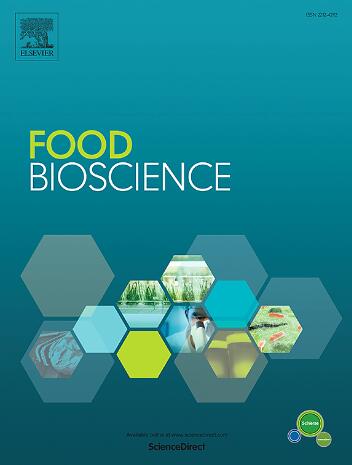天然羟基肉桂酸在胃肠道中的生物利用度、吸收、消化和代谢
IF 5.9
1区 农林科学
Q1 FOOD SCIENCE & TECHNOLOGY
引用次数: 0
摘要
羟基肉桂酸(HCAs)包括阿魏酸、咖啡酸、香豆酸、迷迭香酸和绿原酸,广泛存在于植物性食物和草药提取物中。它们以其促进健康的特性而闻名,如抗氧化、抗炎、抗糖尿病和抗癌活性。然而,它们的生物利用度很低,并且它们在胃肠道内的代谢途径非常复杂。因此,了解HCAs在消化过程中如何转化、吸收和代谢对于评估其生理相关性至关重要。本文综述了天然HCAs的生物利用度、吸收、消化和代谢。该研究全面考察了天然HCAs在口腔、胃和肠道等不同消化道的生物利用度、吸收和消化机制。此外,还对影响HCAs消化代谢的关键因素如pH、消化酶和微生物组成进行了批判性的讨论。在口腔中,HCAs经过有限的酶和口腔细菌降解,其中一些具有抗菌活性。HCAs在口腔和胃中的吸收极小,在酸性胃条件下相对稳定。然而,胃中的酸性环境通过与唾液成分反应,促进部分降解,形成硫氰酸酯和氧噻虫酮衍生物。肠道是HCAs吸收和降解的主要部位。各种酶和碱条件的存在导致HCA代谢物如葡萄糖醛酸、硫酸盐和甲基化衍生物的产生。代谢物具有与完整的HCAs化合物相似的健康益处。进一步研究HCAs的生物利用度、吸收和降解代谢是增强其营养和治疗应用的迫切需要。本文章由计算机程序翻译,如有差异,请以英文原文为准。
Bioavailability, absorption, digestion and metabolism of natural hydroxycinnamic acids in gastrointestinal tract
Hydroxycinnamic acids (HCAs) including ferulic, caffeic, coumaric, rosmarinic and chlorogenic acids are widely present in plant-based foods and herbal extracts. They are renowned for their health-promoting properties such as antioxidant, anti-inflammatory, antidiabetic and anticancer activities. However, their bioavailability is low and their metabolic pathways within the gastrointestinal tract are highly complex. Hence, understanding how HCAs are transformed, absorbed, and metabolized during digestion is crucial to evaluate their physiological relevance. This review highlights the bioavailability, absorption, digestion and metabolism of natural HCAs. It comprehensively examines the bioavailability, absorption and digestion mechanism of natural HCAs across different digestive compartments, including the oral cavity, stomach and intestinal tract. Additionally, it critically discussed the key factors influencing the digestion and metabolism of HCAs such as pH, digestive enzymes and microbial composition. In the oral cavities, HCAs undergo limited enzymatic and oral bacterial degradation, with some exhibiting antimicrobial activity. Absorption in oral cavity and stomach is minimal, and HCAs are relatively stable under acidic gastric conditions. However, acidic environment in the stomach promotes partial degradation through reaction with salivary components to form thiocyanate and oxathiolone derivatives. The intestinal tract serves as the main site for HCAs absorption and degradation. The presence of various enzymes and alkali conditions causes the production of HCA metabolites such as glucuronides, sulfates and methylated derivatives. The metabolites possess the health benefits similar to those of the intact HCAs compounds. Further studies on the bioavailability, absorption and degradation metabolism of HCAs are strongly required for enhanced nutraceutical and therapeutic applications.
求助全文
通过发布文献求助,成功后即可免费获取论文全文。
去求助
来源期刊

Food Bioscience
Biochemistry, Genetics and Molecular Biology-Biochemistry
CiteScore
6.40
自引率
5.80%
发文量
671
审稿时长
27 days
期刊介绍:
Food Bioscience is a peer-reviewed journal that aims to provide a forum for recent developments in the field of bio-related food research. The journal focuses on both fundamental and applied research worldwide, with special attention to ethnic and cultural aspects of food bioresearch.
 求助内容:
求助内容: 应助结果提醒方式:
应助结果提醒方式:


